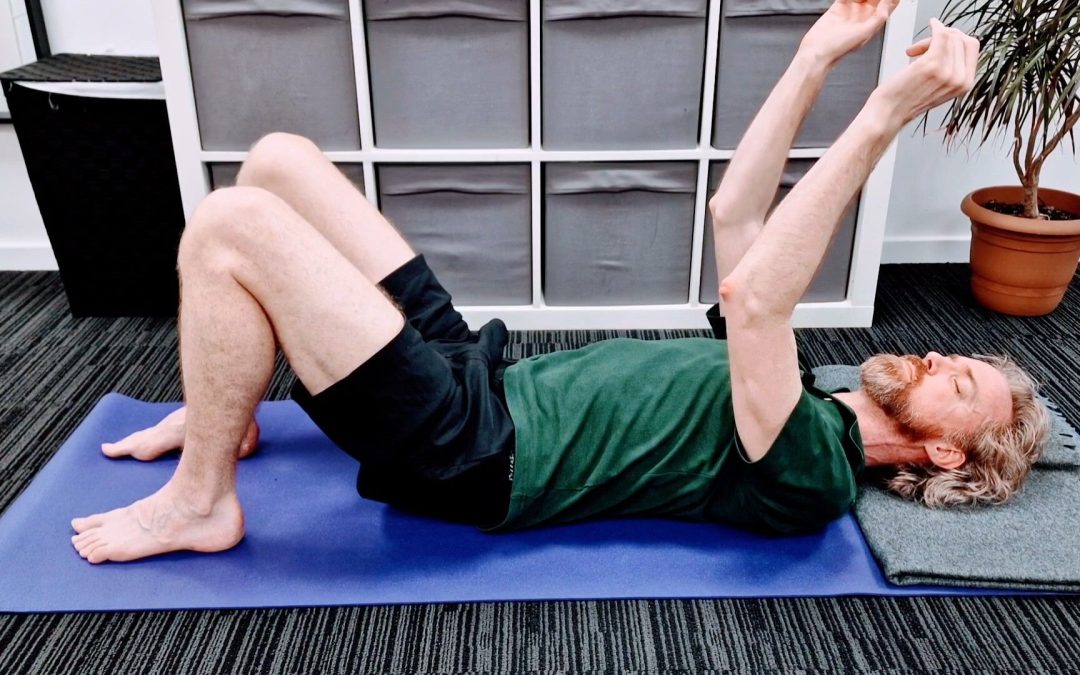This is a lovely movement that I find helps to soften the shoulders and neck. It gets into the muscles that help to control the position and motion of the scapula and so helps with repositioning. In modern life the shoulderblades have a tendency to roll forwards as we spend significant periods sitting at a computer, hunching over a book or always looking at a mobile or other device.
Why do I call it a scritch? Well, it’s a word I’ve (possibly) made up that is kind of like a scratch or an itch. Scratching to me uses the fingers, and this doesn’t, so instead I called it a scritch.
The following talks about moving the shoulders/arms and head/neck. You don’t have to do both together and if one isn’t possible for any reason (neck disk issues) then don’t do that one.
There really isn’t much to see when you’re doing these movements, so the images aren’t super helpful. Read the text, watch the video and then have a go yourself. The movements can look a bit weird so I’d suggest doing this somewhere private, at least until you get confident with the movements.
It uses a movement rather stretches, and as always this should not generate feelings of pain or significant discomfort.
Equipment
None really needed, but some props to make you comfortable are suggested:
- Yoga mat; If you’re lying on the ground or floor then something like a yoga mat can be good.
- A blanket or small pillow to go under the head can also be really nice, I would suggest something that is not too sticky/tacky as you want to be able to slide over it.
Part 1 – Scapula scritch
- Lie down and make yourself comfortable.
- Having the knees bent with the feet flat on the floor can make the low back more comfortable, but you could place a pillow under the knees if that makes it better.
- Place a thin pillow or blanket under your head
- Put your arms where you want:
- If possible, lift one arm up. It should feel like the bones are stacked one over the other and almost as if the arm is weightless and could stay up there for ages. This is my preferred position, but that may just be me.
- If you have shoulder issues (eg frozen shoulder) you can have the arms comfortably out to the side, probably with the palms upwards. This can also be the position if you can’t keep your arms in the air.
- For one side, imagine there is a slight itch or irritation just to the spine side of the lowest point of the shoulder blade. (See the pink x on the green area of the image to the right)
- Move the shoulder blade to try to scritch (or scratch) that area. You want to move just the shoulder blade, and keep the ribcage still. There can be a tendency to move the whole of the back of the body to scratch this area. You’re trying to isolate the shoulder blade.
- The shoulder blade can move in any direction to get into that place to scritch.
- You could start moving head to toe.
- Then inwards and outwards.
- Moving diagonally
- Circling
- The movements you use can be in any direction if it makes you feel like you’re getting into that area. THEY DO NOT HAVE TO BE NEAT AND PRECISE. This is a messy movement so play around.
- If a certain direction feels harder to achieve, then work a bit more into that motion.
- The movements shouldn’t cause discomfort or pain.
- Keep moving for at least 30 seconds but for however long you want to do it.
- Lower that arm down and notice how it feels.
- Repeat Steps 3-10 with the other arm.
- Then bring both arms up and do one shoulder for a bit, then the other. As if the shoulders are having a conversation back and forth between them.
- Once you’ve had enough, pause with the arms down and see how it feels.
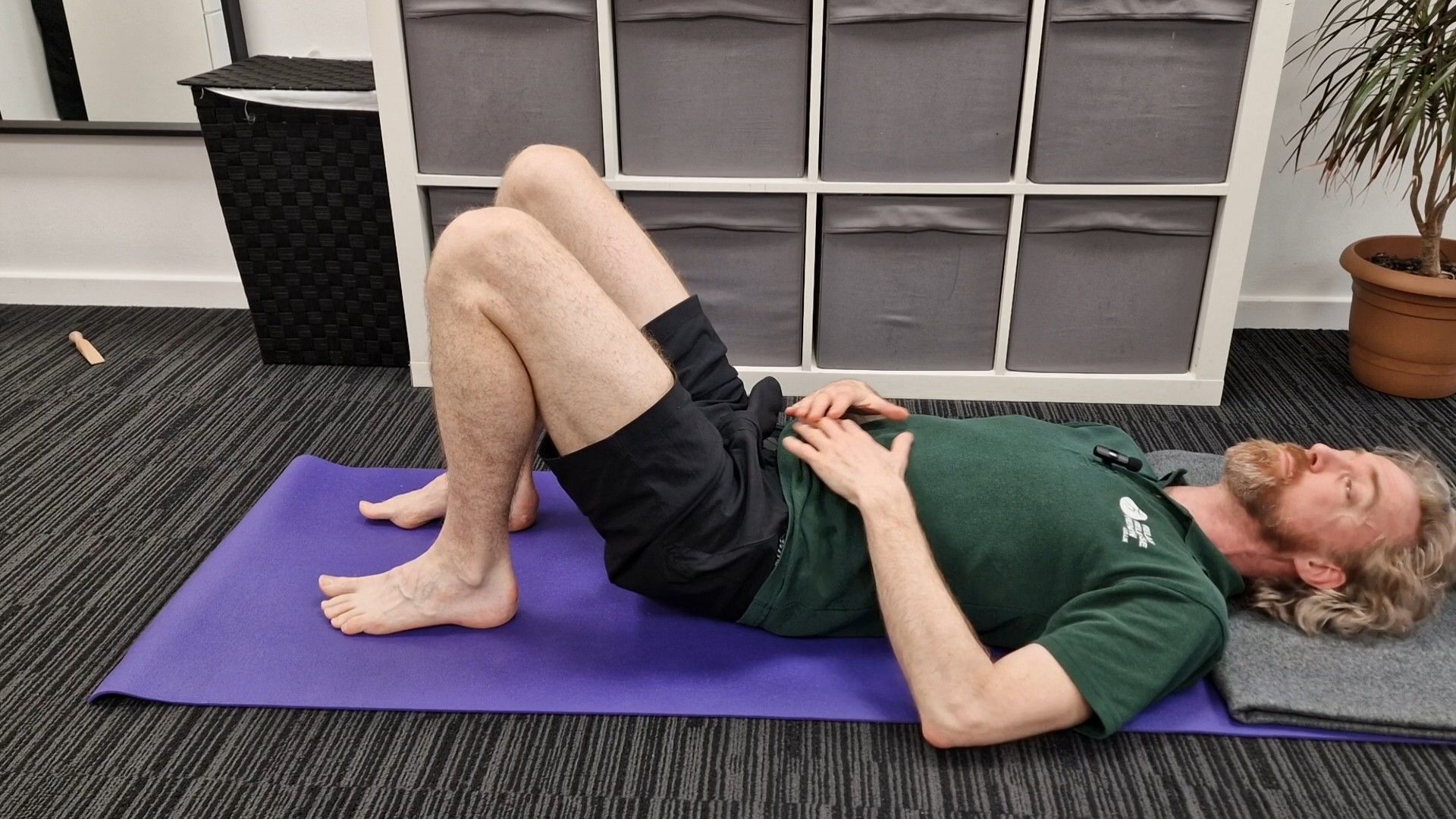
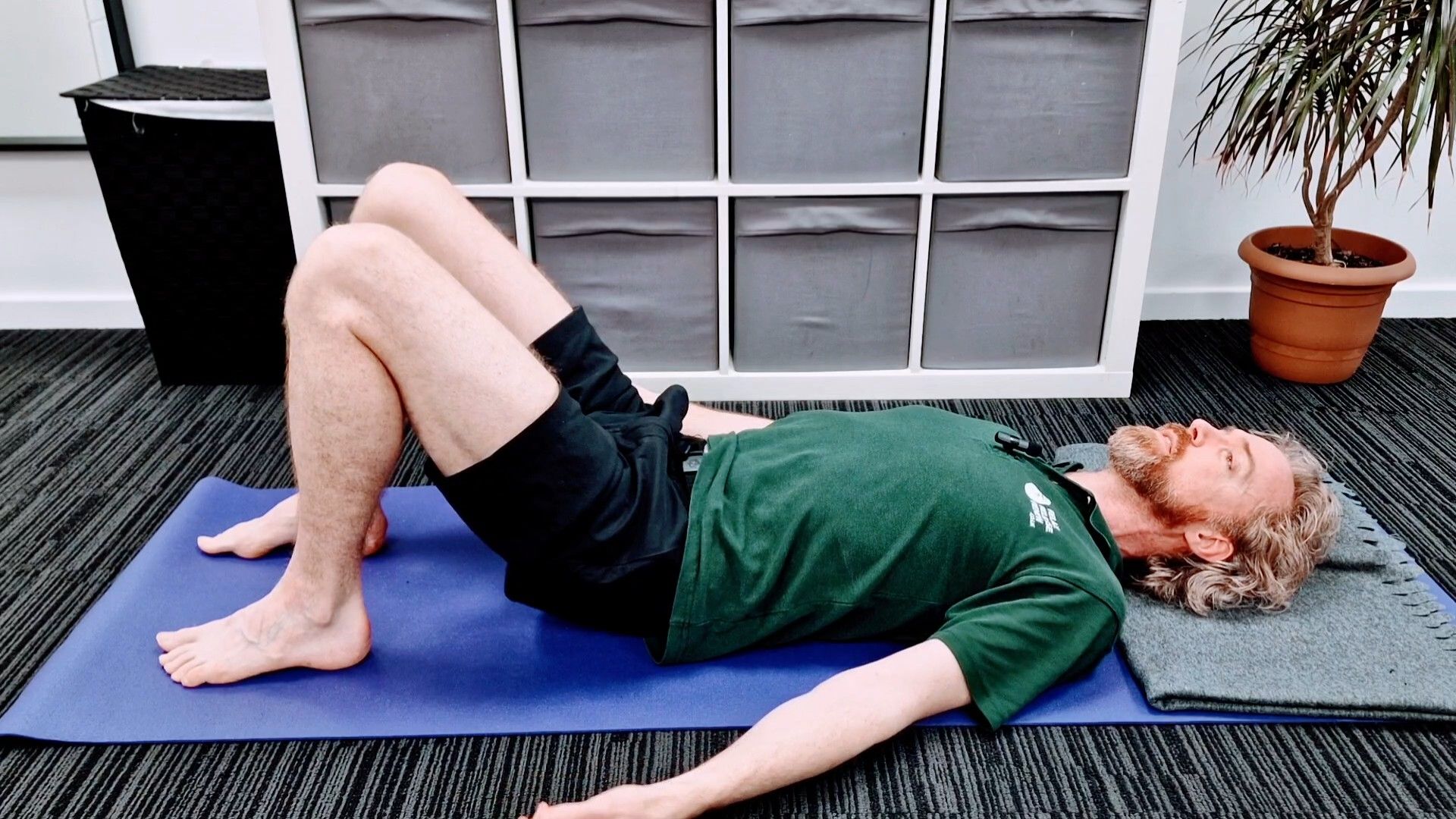
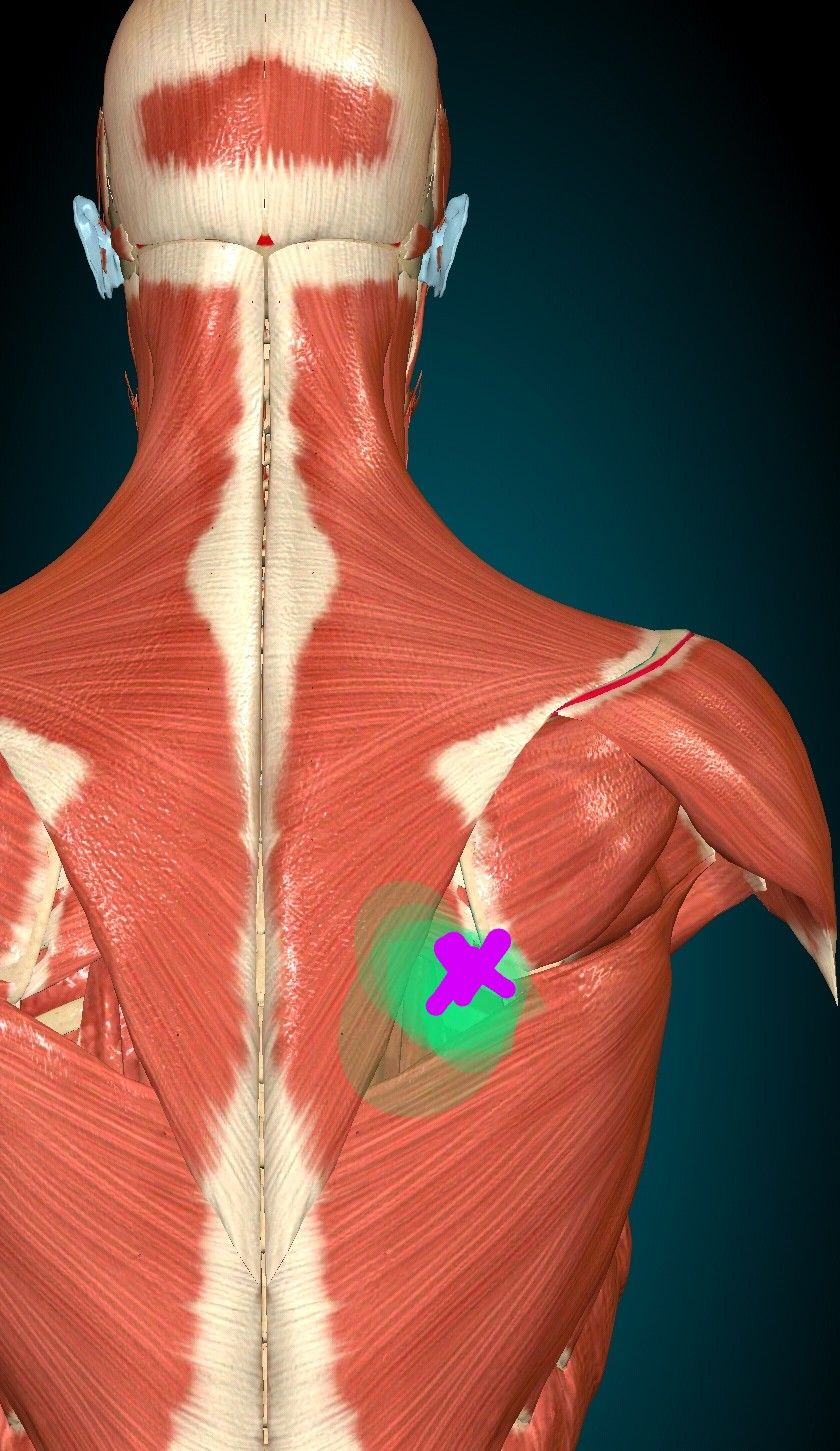
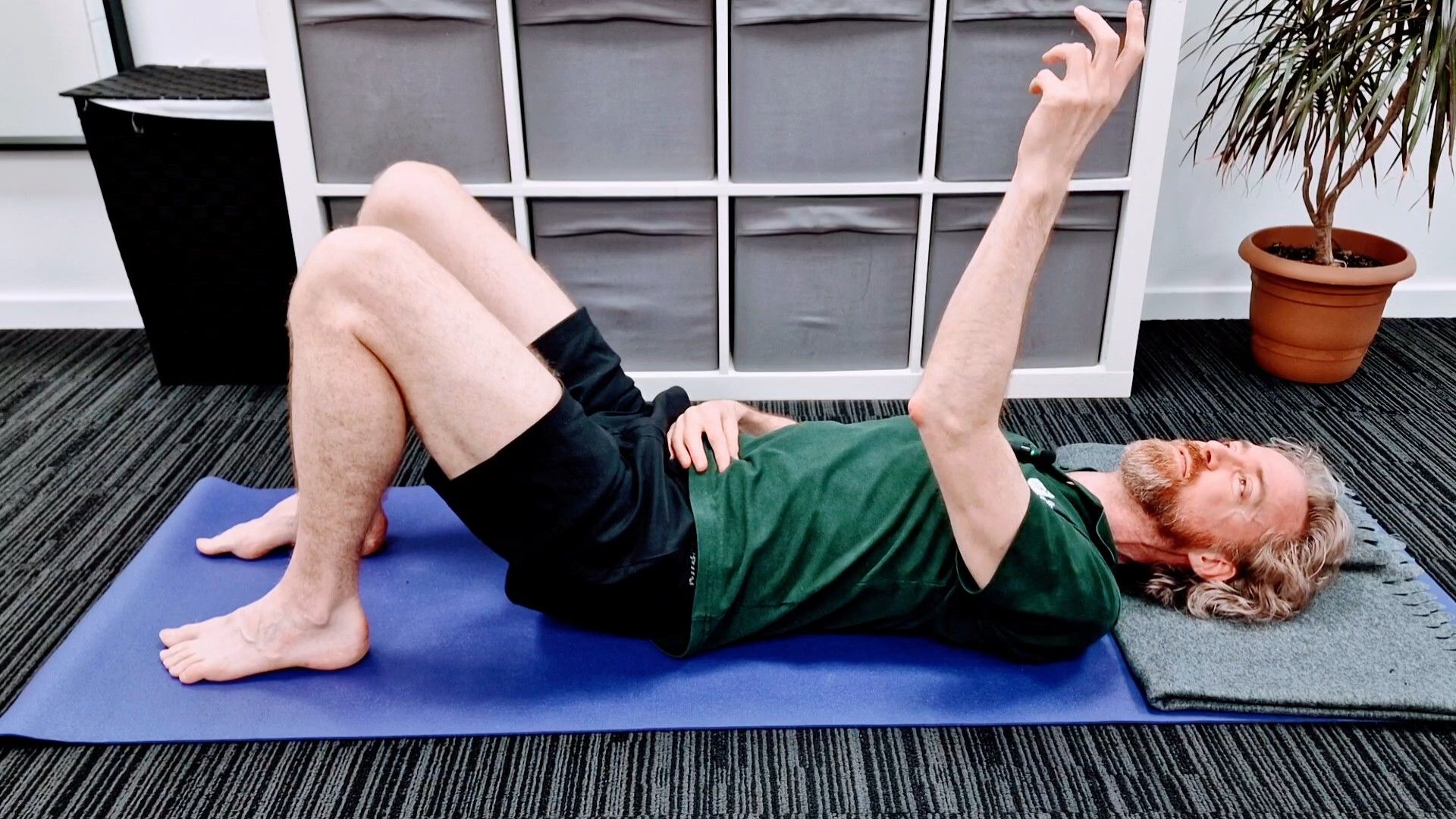
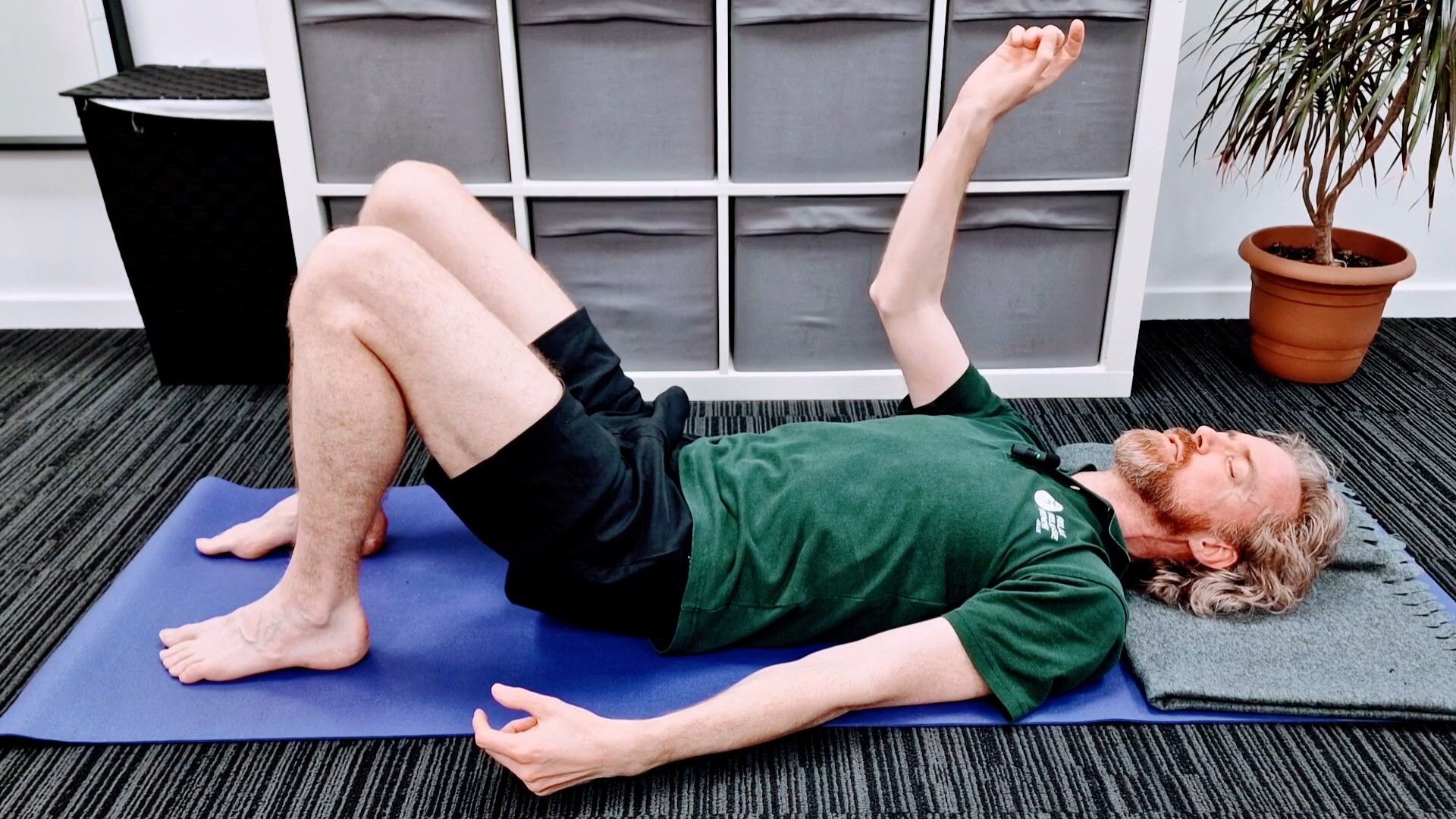
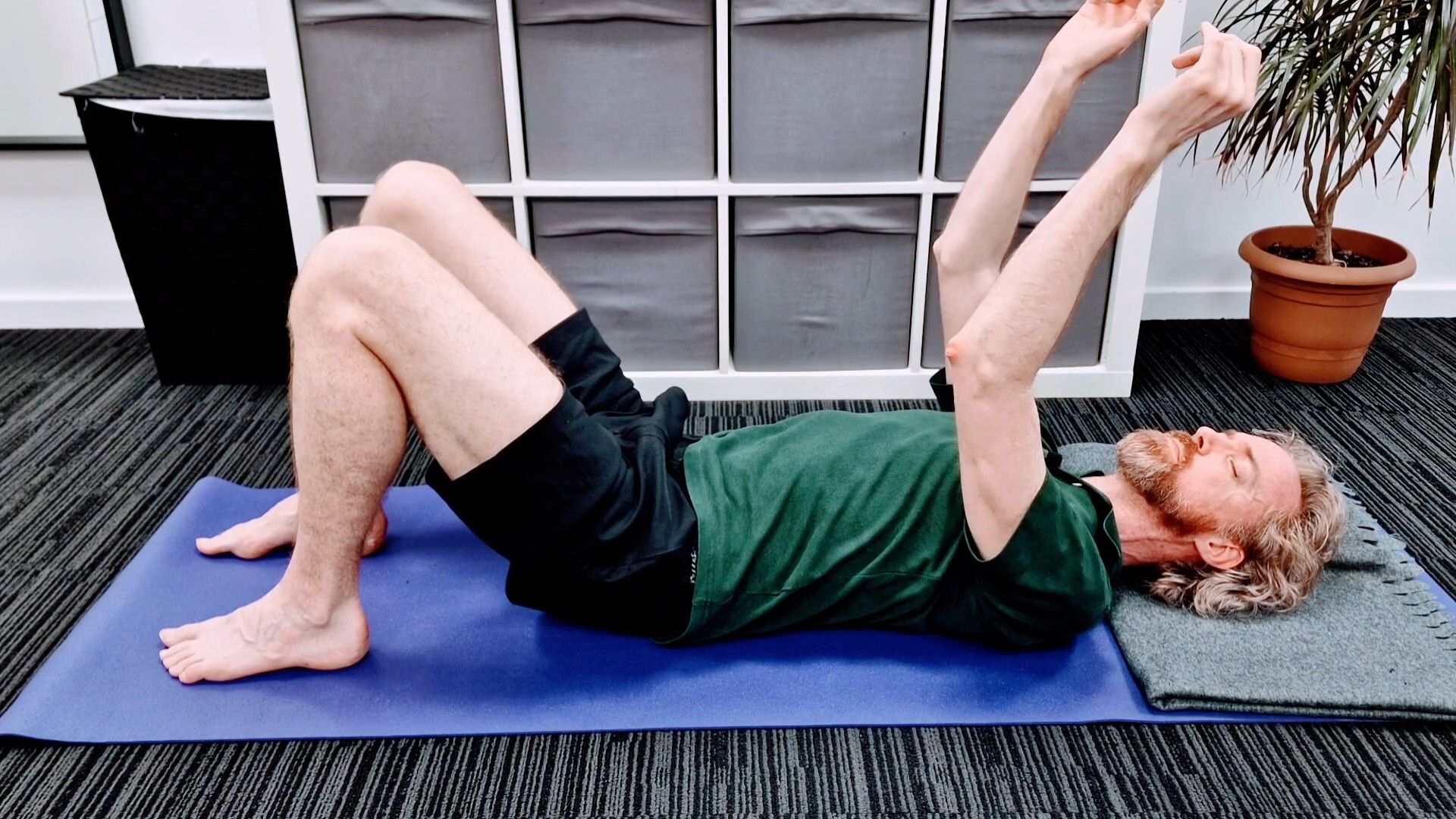
Part 2 – Back of Head scritch
This can be done after or before the shoulders. If you feel nervous about the movements, then keep them small or don’t do this part of the exercise.
- Lie on the floor with your knees bent.
- Place a blanket under your head.
- Lie on a yoga mat.
- Place a pillow under your knees if that is more comfortable.
- Imagine that you have a crayon on the back of your head, where your head is resting on the ground.
- You want to use that crayon to colour in as much of the space you’re lying on as possible.
- Moving in whatever way you want, move the head around to colour in (scribbling movements) that space.
- Nodding the head up and down.
- Wobbling the head from side to side.
- Sidebending the neck from side to side.
- Combinations
- The movements do not have to be fast, or neat and precise. Just move in whatever way you feel is good for you.
- If a direction feels harder than expected, explore that a bit more.
- These movements should not generate a feeling of anxiety about the neck or pain. The space you’re “colouring in” doesn’t have to be that large.
- Continue for as long as you want, maybe 30 seconds to a minute. The relax and notice how you feel.
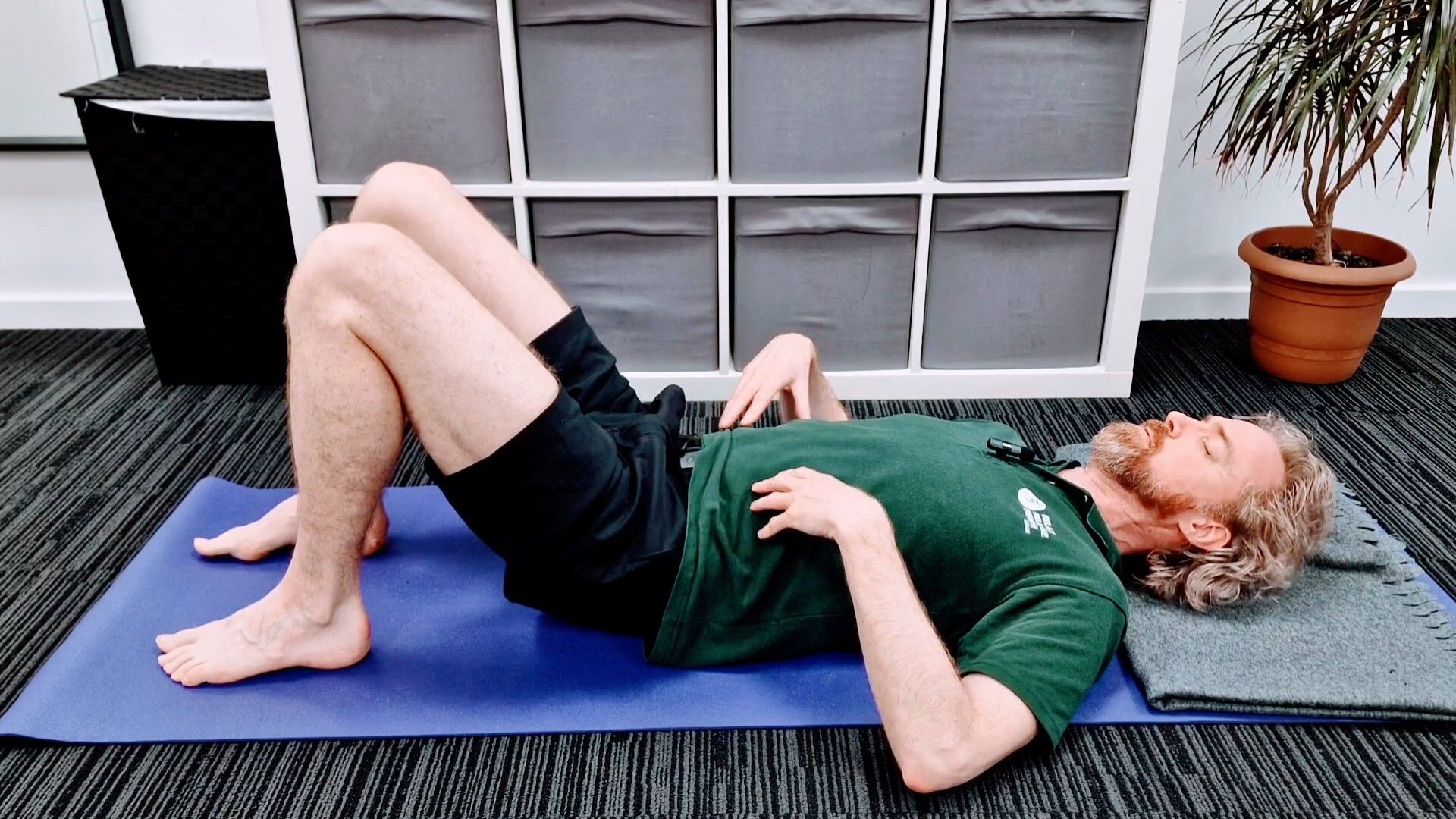

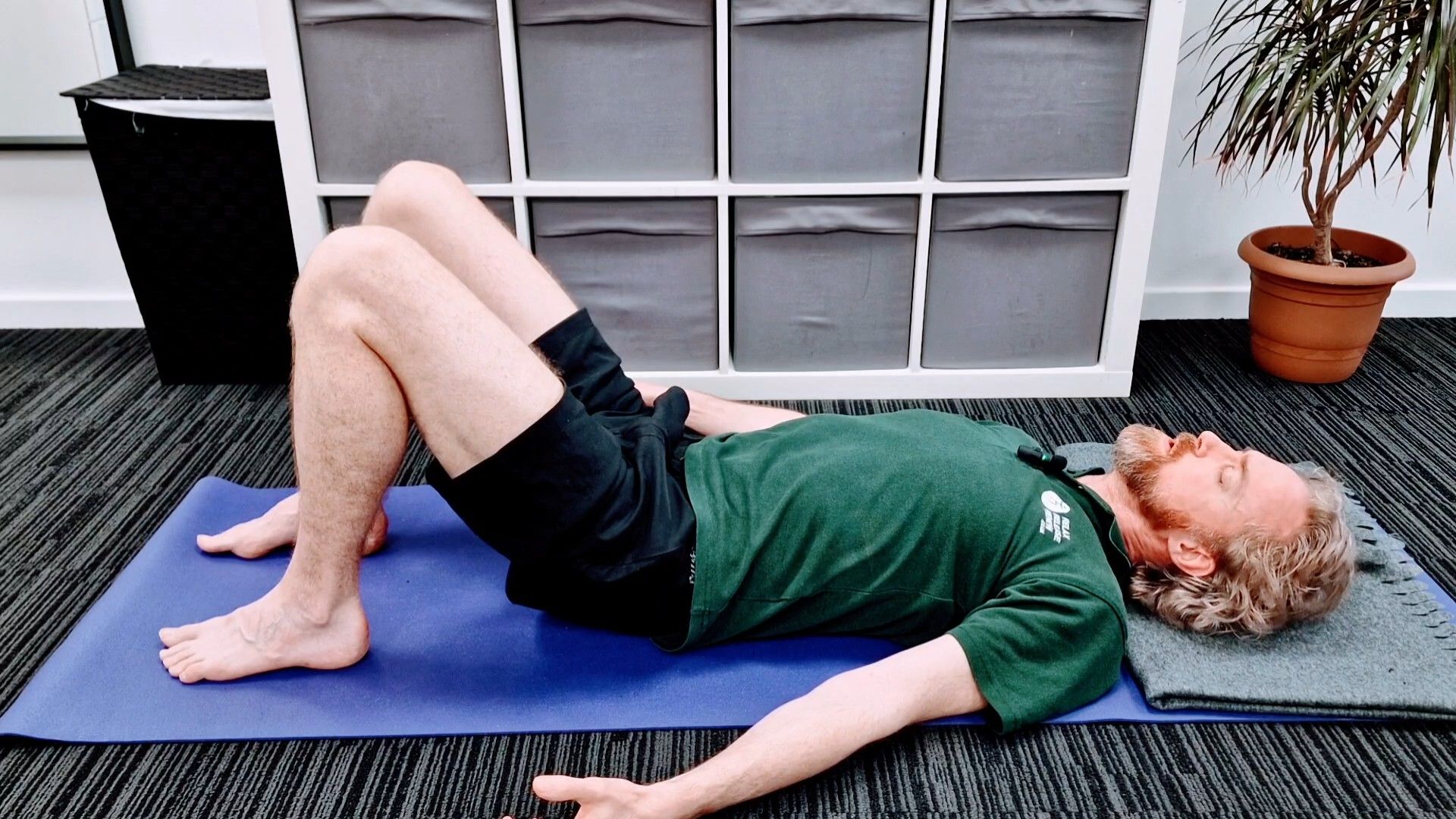
That’s the movement, and they don’t both have to be done at the same time, but they go together quite well. I feel like my shoulders sink towards the floor after each movement and the neck feels more relaxed. It can also feel a little like the shoulders have had a slight work out, but that feels like a good thing as its not too much effort.
Video
Thanks for reading this my lovely Interonauts.
Tim


